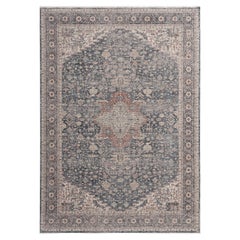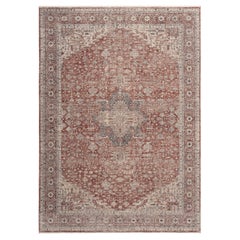Solo Rugs Emin
Recent Sales
21st Century and Contemporary Indian Modern Indian Rugs
Polyester
21st Century and Contemporary Indian Modern Indian Rugs
Polyester
21st Century and Contemporary Indian Modern Indian Rugs
Polyester
A Close Look at modern Furniture
The late 19th and early 20th centuries saw sweeping social change and major scientific advances — both of which contributed to a new aesthetic: modernism. Rejecting the rigidity of Victorian artistic conventions, modernists sought a new means of expression. References to the natural world and ornate classical embellishments gave way to the sleek simplicity of the Machine Age. Architect Philip Johnson characterized the hallmarks of modernism as “machine-like simplicity, smoothness or surface [and] avoidance of ornament.”
Early practitioners of modernist design include the De Stijl (“The Style”) group, founded in the Netherlands in 1917, and the Bauhaus School, founded two years later in Germany.
Followers of both groups produced sleek, spare designs — many of which became icons of daily life in the 20th century. The modernists rejected both natural and historical references and relied primarily on industrial materials such as metal, glass, plywood, and, later, plastics. While Bauhaus principals Marcel Breuer and Ludwig Mies van der Rohe created furniture from mass-produced, chrome-plated steel, American visionaries like Charles and Ray Eames worked in materials as novel as molded plywood and fiberglass. Today, Breuer’s Wassily chair, Mies van der Rohe’s Barcelona chair — crafted with his romantic partner, designer Lilly Reich — and the Eames lounge chair are emblems of progressive design and vintage originals are prized cornerstones of collections.
It’s difficult to overstate the influence that modernism continues to wield over designers and architects — and equally difficult to overstate how revolutionary it was when it first appeared a century ago. But because modernist furniture designs are so simple, they can blend in seamlessly with just about any type of décor. Don’t overlook them.
Materials: plastic Furniture
Arguably the world’s most ubiquitous man-made material, plastic has impacted nearly every industry. In contemporary spaces, new and vintage plastic furniture is quite popular and its use pairs well with a range of design styles.
From the Italian lighting artisans at Fontana Arte to venturesome Scandinavian modernists such as Verner Panton, who created groundbreaking interiors as much as he did seating — see his revolutionary Panton chair — to contemporary multidisciplinary artists like Faye Toogood, furniture designers have been pushing the boundaries of plastic forever.
When The Graduate's Mr. McGuire proclaimed, “There’s a great future in plastics,” it was more than a laugh line. The iconic quote is an allusion both to society’s reliance on and its love affair with plastic. Before the material became an integral part of our lives — used in everything from clothing to storage to beauty and beyond — people relied on earthly elements for manufacturing, a process as time-consuming as it was costly.
Soon after American inventor John Wesley Hyatt created celluloid, which could mimic luxury products like tortoiseshell and ivory, production hit fever pitch, and the floodgates opened for others to explore plastic’s full potential. The material altered the history of design — mid-century modern legends Charles and Ray Eames, Joe Colombo and Eero Saarinen regularly experimented with plastics in the development of tables and chairs, and today plastic furnishings and decorative objects are seen as often indoors as they are outside.
Find vintage plastic lounge chairs, outdoor furniture, lighting and more on 1stDibs.
Finding the Right indian-rugs for You
Today, there are few elements of decor as consistently beautiful as vibrantly colored, intricately patterned antique rugs. The legacy of fine Indian rugs and carpets dates back to the Mughal Empire, with Jalal-ud-Din Akbar in the 16th century establishing workshops for carpet weaving based on Persian practices. Combined with the aesthetics of Indian art, a new rug tradition was born.
In India, these Persian-inspired rugs and carpets were often made with lush materials, including silk, velvet and pashmina, a type of cashmere. It could take laborers as long as 15 years to weave a single carpet. Many of these rugs and carpets were created for royalty and frequently used inside palaces and mosques, particularly on special occasions.
Though the carpet weaving stemmed from a Persian tradition, Indian rugs and carpets featured designs that predated Persian influences. These complex patterns included floral, geometric, and animal motifs.
Indian rugs remain among the most coveted decorative items today. Browse 1stDibs for a wide variety of vintage, new and antique Indian rugs and carpets to establish a lavish focal point in any room in your home. See our guide to caring for your antique and vintage rugs, and read about how to choose the right area rug for your space.

